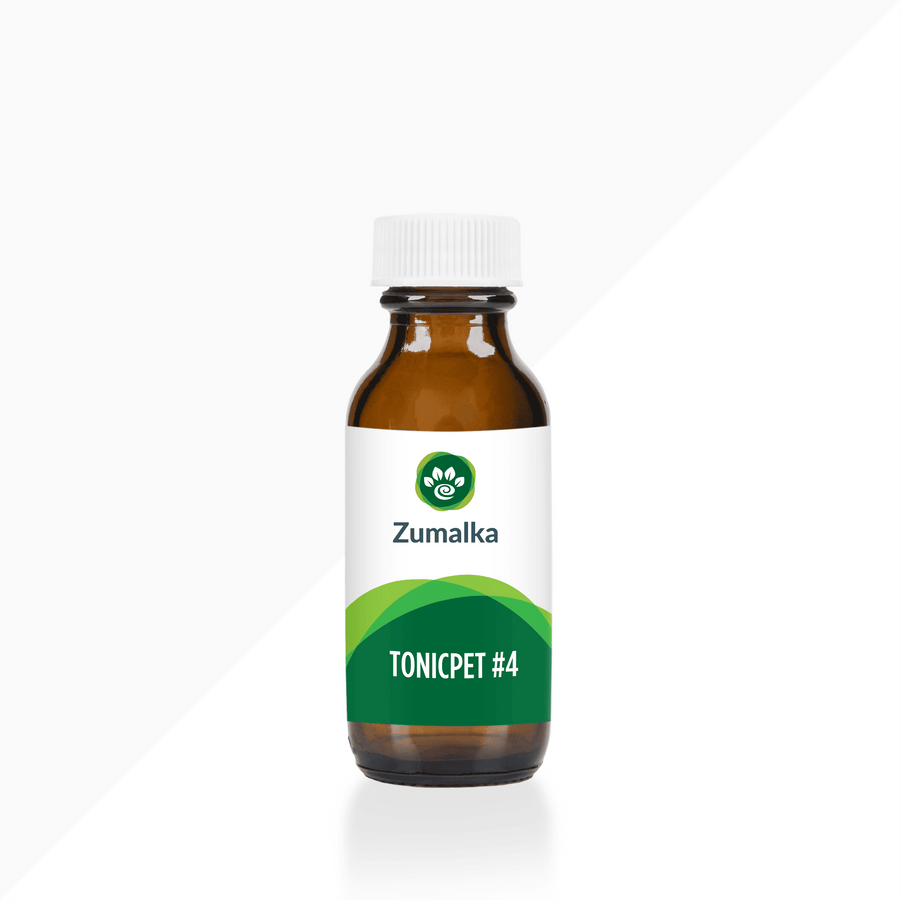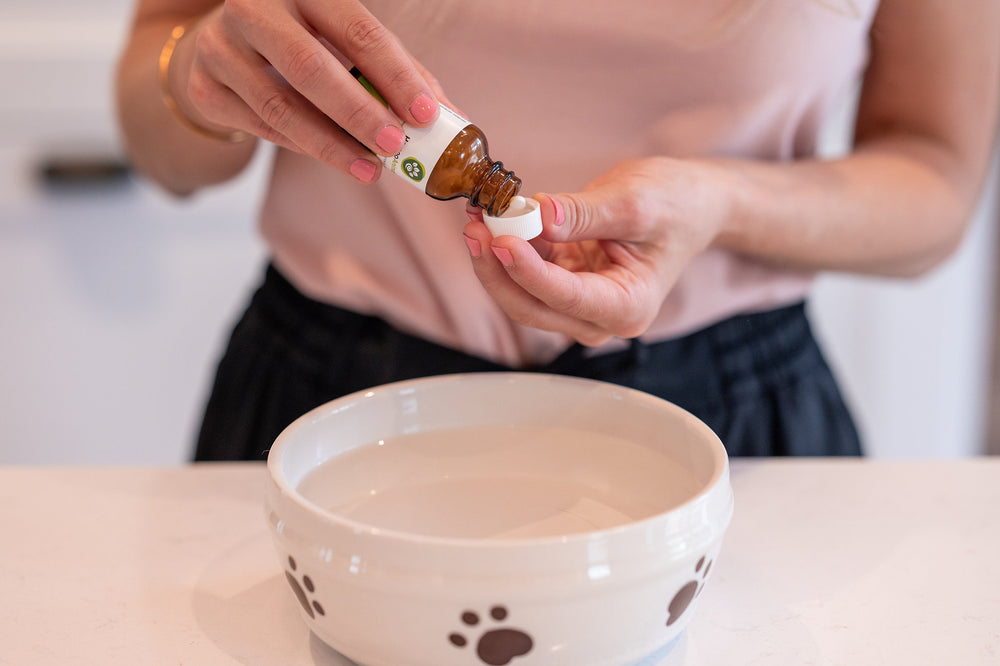Expert-Verified: 10 Hidden Causes of Anal Sac Disease in Dogs
List of Contents
- A Quick Guide to Dog Anal Glands
- Hidden Causes of Dog Anal Sac Disease Every Pet Owner Should Know
- Understanding Common Dog Anal Gland Problems
- When to Seek Professional Help for Your Dog’s Anal Glands
- Key Clinical Signs of Anal Sac Disease to Watch For
- Veterinary Treatment Options for Canine Anal Sac Disease
- Effective Natural Remedies for Dog Anal Gland Issues
- Step-by-Step Guide to Expressing Your Dog’s Anal Glands at Home
- FAQs
If your dog is frequently scooting on the floor, they may be experiencing anal gland issues.
Also known as anal sacs, these glands can become impacted, potentially leading to infection or rupture if left untreated. Addressing the problem early can help prevent discomfort and more serious complications.
In this article, we’ll explore the lesser-known causes of anal sac disease in dogs that every pet parent should be aware of. We'll also cover key risk factors, clinical signs to watch for, natural remedies, and essential prevention tips to help keep your dog healthy.
A Quick Guide to Dog Anal Glands

Anal glands are two small, oval-shaped sacs positioned on either side of a dog's anus. Their size varies from a pea to a small grape, depending on the dog's age and breed. Anatomically, they are located at approximately the 4 and 8 o’clock positions.
Anal glands produce a distinctive, oily fluid with a strong, fishy odor unique to each dog. These glands are internal and not visible externally. Both male and female dogs have them.
What exactly is the function of dog anal glands?
Experts believe that a dog's anal sacs serve as natural scent markers, helping them communicate with other dogs. These glands release a unique scent that not only identifies a dog but also conveys information about their sex, age, and overall health. Think of it as a personalized signature that other dogs can recognize.
Your pet typically releases this fluid during bowel movements, giving their feces a distinct scent. However, these glands may also express involuntarily in moments of stress or fear. A lesser-known theory suggests that fluid from canine anal glands may act as a lubricant to aid in passing hard stools.
Hidden Causes of Dog Anal Sac Disease Every Pet Owner Should Know

Now that we’ve gone over the basics, let’s take a closer look at the hidden causes of anal gland problems in dogs. You may be unknowingly making these mistakes, which could be affecting your dog’s well-being:
#1. Not providing your dog with enough dietary fiber.
A diet low in fiber can result in soft stools that fail to put enough pressure on the anal glands, preventing them from naturally emptying.
Over time, this can lead to gland buildup, discomfort, and even impaction. Ensuring your dog’s diet includes an adequate amount of fiber can help promote firm stools and support healthy gland function.
#2. Failing to maintain a healthy weight for your dog.
Excess weight in dogs can lead to poor muscle tone, including in the muscles surrounding the anal glands, making natural expression more difficult.
Additionally, obesity may contribute to increased gland secretion, leading to a higher risk of buildup and impaction. Just to emphasize, impaction occurs when the sacs become clogged with thick fluid that cannot be released naturally. Maintaining a healthy weight through proper diet and exercise can help support normal gland function and overall well-being.
#3. Ignoring diarrhea or ongoing soft stool issues.
Chronic soft stools or diarrhea can interfere with the natural emptying of the anal glands, much like a lack of fiber in the diet.
When stools are too loose, they don’t provide enough pressure to express the glands, leading to buildup and potential blockages. Managing your dog’s digestive health with a balanced diet and appropriate treatment can help prevent these issues.
#4. Not managing your dog’s food or environmental allergies.
Food and environmental allergies can trigger inflammation in the anal area, making it harder for the glands to empty naturally.
This irritation may lead to excessive licking, discomfort, and an increased risk of impaction or infection. Managing allergies through dietary adjustments and environmental changes can help reduce inflammation and support proper gland function.
#5. Ignoring persistent skin conditions in your dog.
Chronic skin dermatitis can extend to the anal area, leading to inflammation and irritation that may interfere with normal gland function.
Persistent skin issues can cause excessive licking or discomfort, increasing the risk of impaction or infection. Addressing underlying skin conditions through proper care and treatment can help maintain healthy anal glands and overall well-being.
#6. A dog's genetics may contribute to anal gland issues.
Genetics play a role in anal gland health, with smaller breeds being more prone to issues.
However, no breed is entirely exempt, and some are at higher risk due to anatomical factors. Understanding your dog’s genetic predisposition allows for early monitoring and preventive care.
#7. Certain anatomical abnormalities can increase the risk of anal sac disease.
Some dogs are congenitally predisposed to anal sac issues due to narrow gland openings. Breeds most at risk include Cavalier King Charles Spaniels, King Charles Spaniels, Cocker Spaniels, Shih Tzus, and Bichon Frises.
When the openings are too small, the glands may not drain efficiently, increasing the risk of buildup and impaction. Regular monitoring and proactive care can help prevent discomfort and more serious complications.
#8. Not managing your dog’s weak muscle tone.
Poor muscle tone can make it difficult for a dog to naturally empty their anal sacs, leading to buildup and potential impaction.
Weak muscles in the pelvic area may prevent the necessary pressure needed for proper gland expression. While this may have been mentioned earlier, it’s an important factor that deserves extra attention.
#9. Excess fluid production in your dog's anal glands can lead to issues.
Your dog's anal glands may sometimes produce excessive fluid, which can increase the risk of buildup and irritation.
This overproduction can lead to discomfort, frequent scooting, and even impaction if not properly managed. Monitoring your dog’s gland health and addressing any abnormalities can help prevent complications.
#10. Failing to address parasite infestations and infections.
Internal and external parasites can contribute to anal gland issues by causing inflammation, irritation, or digestive disturbances. Intestinal parasites may lead to chronic soft stools, preventing natural gland expression, while external parasites can cause excessive licking and irritation in the anal area.
Understanding Common Dog Anal Gland Problems
As mentioned earlier, anal gland issues are a common concern in dogs. These problems arise when the glands become overfilled, impacted, irritated, or infected. Below are the different types of anal gland issues that can affect your dog:
- Impaction occurs when the fluid in the anal glands thickens and blocks the sacs, forming a hard mass.
- Infection, also known as anal sacculitis, occurs when bacteria enter the sacs, causing inflammation and pus buildup.
- An abscess forms when an untreated infection worsens, leading to a painful, swollen mass filled with pus.
- A ruptured abscess occurs when an abscess bursts, releasing pus and causing further irritation or infection.
- Anal gland cancer ( adenocarcinoma) is a rare but serious condition, most commonly affecting older female dogs.
When to Seek Professional Help for Your Dog’s Anal Glands
As with any health issue in dogs, it’s crucial to consult a veterinarian or pet homeopathy expert at the first signs of anal sac disease. If left untreated, anal gland problems can lead to infections, abscesses, and discomfort. Prompt care can help prevent complications and keep your pet healthy.
Home remedies may help with mild cases, but if you notice thick, chunky, gray, black, green, yellow, bloody, or white discharge, consult a veterinarian immediately, as this may indicate an infection. Always seek professional guidance before attempting treatment at home.
Key Clinical Signs of Anal Sac Disease to Watch For
Contrary to popular belief, a fishy odor and frequent scooting on the floor, carpet, or other surfaces are not the only signs of anal sac disease in dogs. There are several other clinical symptoms to watch for, which are outlined below:
- Excessive licking or biting: Dogs may frequently lick or bite their rear end or the base of their tail, signaling discomfort or irritation.
- Straining or difficulty defecating: Impacted or infected anal glands can cause pain during bowel movements, making defecation difficult for your dog.
- Redness or swelling near the anus: This may indicate an infection or abscess, requiring prompt attention to prevent further complications.
- Sudden sitting or staring at the back end: This behavior may indicate discomfort or irritation caused by anal gland issues.
- Discomfort while walking or sitting: Dogs may exhibit signs of pain or unease, indicating potential anal gland issues.
- Changes in anal gland fluid color: A shift from yellow/tan to brownish-gray may signal an underlying issue that requires attention.
- Blood or pus in stool or near the rectum: Indicates a serious issue, such as a ruptured abscess or cancer, requiring immediate veterinary attention.
Don't overlook these clinical signs. If you notice any of them, reach out to your veterinarian or a qualified pet homeopathy specialist. While natural remedies may help mild cases, professional veterinary care is essential if they persist or worsen.
Veterinary Treatment Options for Canine Anal Sac Disease

Before treating anal gland impaction and related issues, a veterinarian will first conduct a thorough physical examination. This may include a digital rectal exam along with diagnostic tests such as ultrasound, fine needle aspiration, biopsy, or bacterial culture to identify the underlying problem.
Based on their findings, they will recommend the most appropriate treatment from the following options:
- Manual expression: A veterinarian will gently squeeze the anal sacs to release trapped fluid, relieving discomfort and preventing further complications.
- Flushing: If the glands are severely infected or painful, the veterinarian may flush them under sedation to remove buildup and reduce inflammation.
- Antibiotics: Prescribed to treat infections, either as oral medication or infused directly into the anal sacs for targeted relief.
- Anti-inflammatory medication: Helps reduce pain, swelling, and discomfort associated with anal gland issues.
- Surgical lancing and draining: Required for abscesses that haven’t ruptured, allowing the veterinarian to drain pus and reduce inflammation.
- Surgical removal (anal sacculectomy): Recommended for severe, recurring cases when other treatments fail. While effective, this procedure carries potential risks, such as fecal incontinence, which should be carefully considered.
Effective Natural Remedies for Dog Anal Gland Issues
Interestingly, there are simple, natural remedies you can use at home to help manage anal sac disease. These include:
Boost your dog’s diet with fiber.
Adding fiber to the diet helps bulk up stools, which can naturally aid in expressing the anal glands. Firmer stools apply gentle pressure on the glands during bowel movements, reducing the risk of buildup and impaction. Additionally, a fiber-rich diet supports overall digestive health, promoting regularity and reducing the chances of soft stools or diarrhea.
Using warm compresses can help soothe your dog and ease irritation.
Warm compresses may provide additional pain relief, reduce inflammation, and promote comfort for your dog. The gentle heat can help improve circulation in the affected area, aiding in the natural drainage of the anal glands.
Regular use, as recommended by your veterinarian or pet homeopathy expert, can also help soothe irritation and prevent further discomfort.
Explore premium natural products to help enhance your pet’s health and vitality.
Zumalka’s GENERAL DETOXIFICATION KIT is formulated to support the body’s natural detoxification process while maintaining organ function and strengthening your pet’s immune system.
Anal gland problems can stem from digestive issues, consuming low-quality food such as kibble or table scraps, or foods that trigger allergies or intolerances. Inflammation of the anal sacs may also cause the ducts to narrow, making it harder for the glands to empty properly and increasing the risk of impaction.
Additionally, TONICPET #1, TONICPET #4, TONICPET #9, and TONICPET #11 can help support and strengthen the immune system, promoting overall health and well-being.
- TONICPET #1: Helps restore elasticity in vascular walls.
- TONICPET #4: Enhances oxygen delivery to tissues, essential for acute conditions like congestion and inflammatory pain.
- TONICPET #9: Supports hydration, playing a key role in nutrition, cell activity, and internal secretions.
- TONICPET #11: Assists in eliminating metabolic waste from blood and tissues, preventing self-poisoning.
Step-by-Step Guide to Expressing Your Dog’s Anal Glands at Home

Did you know that you can express your dog’s anal glands at home? However, it’s important to attempt this if your veterinarian has demonstrated the process and you feel confident doing it. Use this quick guide to help ensure a safe and effective experience:
#1. Make sure you have all the necessary supplies ready.
Expressing your dog’s anal sacs can get messy without the right supplies. Before you begin, prepare latex gloves, paper towels or wipes, petroleum jelly or water-based lubricant, and a warm, damp cloth ready. A dog-safe shampoo is also useful in case a full wash is needed.
#2. Find the anal glands.
Put on gloves and carefully lift your dog’s tail. The anal glands are situated just inside the anus at the 4 and 8 o’clock positions. When full, they may feel like small, firm peas under the skin.
#3. Apply gentle, even pressure.
Insert the index finger into the rectum, using only the first phalanx or, if necessary, the first two. The person performing this procedure mustn't have long nails, as they can cause serious harm to the pet.
Use light, steady pressure to prevent discomfort, and be ready for fluid release, which may have a strong odor.
Excessive pressure can cause pain or injury, so handle your pet’s anal sacs with care. If the glands do not express easily, avoid forcing them.
If you notice blood, pus, or thick yellow/green discharge, contact your veterinarian immediately, as this could signal an infection.
#4. Wipe and clean as gently as possible to avoid irritation.
Use paper towels or wipes to clean up any discharged fluid. If needed, gently wash the area with a warm, damp cloth or dog-safe shampoo to prevent irritation. Finish by drying the area thoroughly to keep your dog comfortable and reduce the risk of infection.
#5. Observe your dog for any signs of discomfort or pain.
Monitor your dog for signs of discomfort, swelling, or infection. If the glands don’t express easily or you notice thick, discolored discharge, seek veterinary advice to prevent complications. Prompt treatment can help avoid further irritation or more serious health issues.
Additional notes to keep in mind:
Expressing the anal glands too frequently can lead to irritation or even damage, so it should only be done as needed. Most dogs require this procedure occasionally, and excessive squeezing can cause more harm than good.
Applying too much pressure or using the wrong technique may also lead to discomfort or complications. If you’re unsure or uncomfortable performing this yourself, it’s always best to seek help from a veterinarian or professional groomer.
Simple Ways to Prevent Anal Gland Issues in Dogs
There are several strategies you can use to help prevent anal sac disease. Incorporate the following into your pet care routine to support healthy gland function:
- Provide a diet high in fiber: Supports healthy digestion and natural gland expression.
- Address health issues early: Promptly manage any underlying conditions that could affect anal gland function. A gentle detox, as mentioned above, 1–2 times per year can be a highly beneficial step for overall well-being.
- Keep your dog at a healthy weight: Excess weight can contribute to gland problems.
- Seek professional guidance: Consult your veterinarian or pet homeopathy specialist if you notice any concerns.
- Only express when necessary: Frequent or improper expression can cause irritation or damage.
- Keep worms and fleas at bay: Regular deworming and flea prevention can also help reduce the risk of anal sac issues in dogs.
FAQs
Should I have my dog's anal glands emptied routinely?
No, routine anal gland expression isn’t necessary unless your dog has recurring issues. Overexpressing can cause irritation or damage. If your dog shows discomfort, consult your veterinarian or pet homeopathy specialist for proper evaluation and care.
Should I have my dog's anal glands emptied at the groomer?
Only have your dog’s anal glands expressed at the groomer if your veterinarian recommends it. Unnecessary expression can cause irritation or damage. If your dog shows signs of gland issues, consult your vet or qualified pet homeopath for proper guidance and care.
Can food cause anal gland issues?
Yes, food can play a role in anal gland issues, particularly if your dog has allergies or sensitivities. A high-fiber diet supports healthy digestion and helps naturally express the glands, reducing the risk of impaction or infection.
What happens if a dog's anal glands aren't expressed?
If a dog's anal glands aren’t expressed when needed, they can become impacted, leading to infection or painful abscesses. Severe cases may require veterinary treatment, including drainage, antibiotics, or surgery to prevent complications.
Are certain breeds more prone to anal gland issues?
Yes, smaller breeds and certain breeds like Chihuahuas, Poodles, and Cocker Spaniels are more prone to anal gland issues. Their anatomy and gland function can lead to frequent impactions, requiring closer monitoring and potential veterinary care.
How can I tell if my dog's anal glands are full?
You can tell if your dog’s anal glands are full by watching for signs like scooting, excessive licking, a strong fishy odor, or discomfort while sitting. If symptoms persist, consult your veterinarian or pet homeopathy expert for proper evaluation and care.
How do you know if your dog needs glands expressed?
If your dog is scooting, excessively licking their rear, emitting a strong fishy odor, or having trouble defecating, their glands may need expression. Consult your veterinarian or pet homeopathy specialist to determine if professional care is necessary.
How can I help my dog express his glands naturally?
To support natural anal gland expression, provide a high-fiber diet, keep your dog active, and ensure they maintain a healthy weight. Firm stools help apply pressure to the glands, reducing the risk of buildup and impaction.
What happens if you don't express your dog's glands?
If your dog’s glands aren’t expressed when needed, they can become impacted, leading to infection, abscesses, or rupture. Severe cases may require veterinary treatment, including drainage, antibiotics, or surgical intervention.
How do I get rid of dog anal gland smell at home?
To eliminate dog anal gland odor at home, clean the area with pet-safe wipes or a warm, damp cloth. Regular grooming, a high-fiber diet, and proper hygiene can help prevent persistent smells. Consult a vet or qualified pet homeopath if needed.
What home remedy can I use to get rid of fishy smell in my dog?
To remove the fishy smell, clean your dog’s rear with pet-safe wipes or a warm, damp cloth. A high-fiber diet supports natural gland expression. Regular baths with dog-safe shampoo can also help. Consult a vet or pet homeopathy expert if odors persist.
Can dogs express their own glands by licking?
No, dogs cannot fully express their anal glands by licking. While licking may provide temporary relief, proper expression usually requires pressure, which is best done by a vet or groomer.
Why does my dog have a fishy-smelling bum?
A fishy-smelling bum in dogs is usually due to anal gland issues. Impacted or infected glands release a strong odor. Regular vet check-ups, consultations with a pet homeopathy expert, and proper expression help prevent discomfort and bad smells.
What breeds of dogs need their glands expressed?
Breeds prone to anal gland issues include Chihuahuas, Shih Tzus, Dachshunds, Bulldogs, and Pugs. These dogs may need regular gland expression to prevent discomfort, impaction, or infection. Consult your vet or a pet homeopathy specialist for proper care.
Do dogs feel better after their glands are expressed?
Yes, dogs feel relief after their glands are expressed. Built-up pressure and discomfort are alleviated, reducing licking, scooting, and irritation. Regular expression prevents infections and keeps your dog comfortable. Consult your vet or pet homeopathy specialist for proper care.
How often should you express a dog's glands?
Most dogs naturally express their glands, but some need manual expression every 4-6 weeks. Frequent scooting or licking may indicate a problem. Consult your vet or pet homeopathy specialist for the best schedule based on your dog’s needs.
Does pumpkin help dogs express their glands?
Yes, pumpkin helps dogs express their glands by adding fiber to their diet, firming stools, and promoting natural expression. Regular consumption can prevent impaction, reducing the need for manual expression. Consult your vet or pet homeopathy expert for guidance.
How can I treat my dog’s swollen glands naturally?
Increase fiber intake with pumpkin, add omega-3s for inflammation, and apply warm compresses for relief. Regular exercise and hydration help. Additionally, natural detoxing with gentle formulas can support overall health and help prevent issues. If swelling persists, consult your vet or pet homeopathy specialist to prevent infections or complications.
Is it safe to express your dog's glands at home?
Yes, you can express your dog's glands at home, but improper technique may cause injury or infection. If unsure, consult your vet or groomer for guidance to ensure safe and effective expression.
Conclusion
Being proactive is crucial in managing anal gland issues in dogs. If you notice signs of anal sac disease, consult a veterinarian or pet homeopathy expert to prevent the condition from worsening and ensure your dog's well-being.
With proper care, most anal gland issues can be managed or prevented, ensuring your dog's comfort. Mild cases may respond to natural remedies, but if symptoms persist or worsen, consult a veterinarian for appropriate treatment.








Hi Khyati,
Thank you so much for your comment and details on Arlo’s situation. We have opened a file for him for analysis from our Health Advisor who can help guide you through this and help him feel and smell much better. We will be sending you a personal email shortly with tips and recommendations for him.
Regards,
Homeoanimal
Hi Veronique
Hope you are well. My name is Khyati and I live in South Australia with my family which includes 4 year old Golden Retriever Arlo. He is a 42 kilo vegan boy who loves playing with his 11 year human brother. I came across your article about anal glands, since lately Arlo has this really pungent smell coming from him. He has had ear infections in the past but his ears are clean now. Took him to his groomer last week and she suspected that it could be his anal glands. Next day took him to the vet who confirmed that that was the case and that she expressed really bad smelling brown liquid more from the right hand side gland. She suggested that I add 1/2 teaspoon psyllium husk paste to his food and look at loosing his weight.
What I’m finding on all websites about anal gland issues in dogs is that the stool is loose but in Arlo’s case it is not so. His stools are firm!!!Is it possible to have anal glands issues if this is the case?
I am really concerned about him and I am praying that he is not in any pain
I am eagerly awaiting your reply in regards to this as I strongly believe in Alternate medicines.
Kindest regards
Khyati
Leave a comment